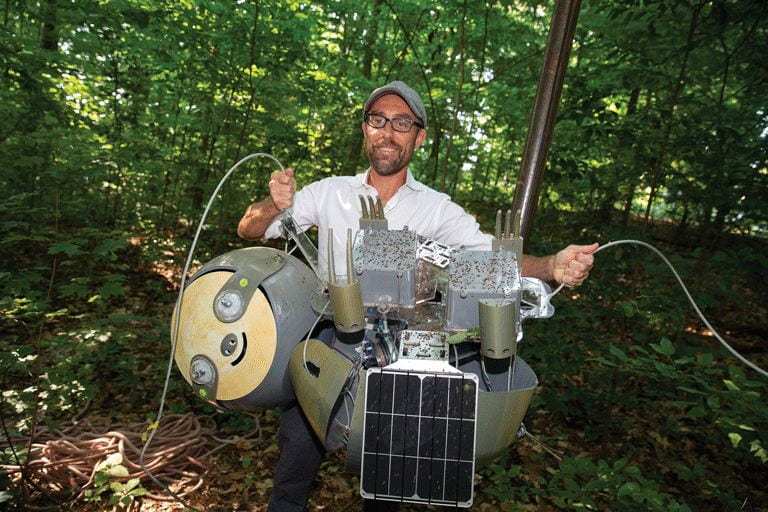The entertainer
Ragtime — that bright, toe-tapping piano music that flourished in bars, brothels and parlor rooms in the early 1900s — has found an unlikely promoter and practitioner at UC Irvine: a young civil engineering student named Jared DiBartolomeo.
DiBartolomeo belongs to a generation that worships technology, was raised on rap and is addicted to keyboards — the kind attached to computers and electronic toys. But sit him in front of a piano and, with the first infectious bars of Eubie Blake’s “Charleston Rag,” he can transport listeners back to the days before the phonograph.
“Ragtime puts smiles on people’s faces. The music is very joyful,” says DiBartolomeo, who tends to talk and play the piano at a fast clip. “It has what the ‘King of Ragtime,’ Scott Joplin, called ‘a weird, intoxicating effect.’ To me, it’s an escape — a way to go back in time.”
He’s a devout student of the genre, quickly rattling off ragtime trivia and history with the same attention to detail he applies to engineering.
Ragtime’s roots can be traced to 19th century plantation songs and spirituals — inspired by the polyrhythmic music of Africa — and traditional European marches and polkas. In 1899, Joplin published one of the earliest and most popular compositions, “Maple Leaf Rag.”
“It launched his career,” DiBartolomeo says. “He was known for it even after his death in 1917. It was the first rag to sell more than 1 million copies — though not in his lifetime.
“Ragtime was a huge national phenomenon that lasted from the turn of the century until the end of World War I, when it morphed into jazz. It attracted all kinds of composers and styles.”
In the 1970s, the genre enjoyed a widespread revival, thanks largely to the 1973 release of “The Sting,” which features several Joplin tunes.
Ragtime combines a strong, steady underlying rhythm and a syncopated melody, with the accents falling between the beats rather than on them, DiBartolomeo says. And why is it called ragtime?
“The syncopated rhythm is kind of ragged,” he says, “which is probably how the music got its name, but no one knows for sure.”
DiBartolomeo fell in love with ragtime when he was a toddler and first heard his father play “Maple Leaf Rag.” He began taking piano lessons when he was 8, practicing ragtime in earnest after finding a folio of Joplin compositions in a bookstore.
Today he performs at annual events statewide, including the West Coast Ragtime Festival in Sacramento and the Orange County Ragtime Society’s RagFest.
“Jared’s a phenomenal pianist,” says Eric Marchese, RagFest’s founding artistic director and founder of the Orange County Ragtime Society. “He picks some of the most difficult pieces to play. I’ve seen him at ragtime festivals, and he’s always kind of introspective. He lets his music speak for him; he pours his heart into it.
“What’s also cool is that he’s chosen an entirely different field to study. Nobody ever got rich playing ragtime. It proves what a good head he has on his shoulders. You play ragtime because you love it.”
After getting a bachelor’s in civil engineering this June, DiBartolomeo hopes to work in highway design, traffic analysis and transportation planning. He’s president of the UCI student chapter of the Institute of Transportation Engineers.
“I want a stable career path. You hear a lot about starving musicians, but not a lot about starving engineers,” says DiBartolomeo, who transferred to UCI as a Regents’ Scholar in his third year.
“Engineering and ragtime both involve solving problems, figuring out how to go from an idea to a finished product. There’s a set of rules and a structure. I like being able to work creatively within a framework,” he says. “No matter what else I do, I’ll continue to play ragtime. With all the changing technology, there’s a need for balance — a constant — in my life.”
Originally published in ZotZine Vol. 2, Iss. 7


